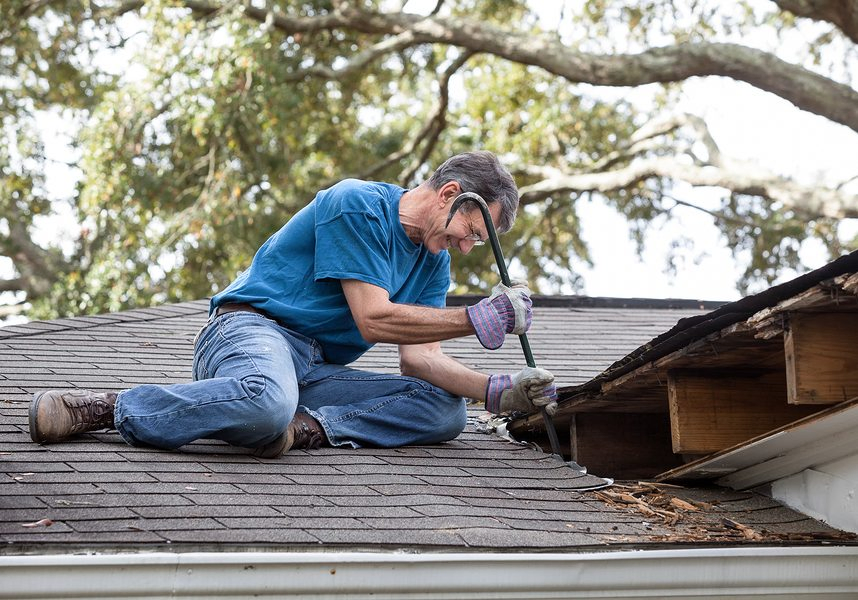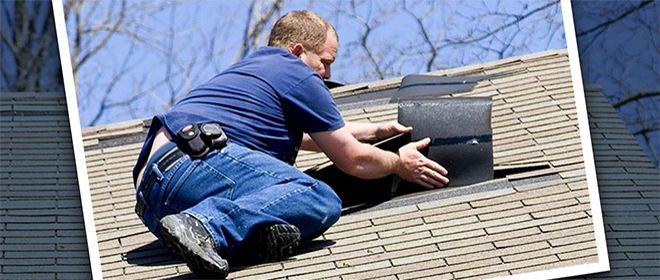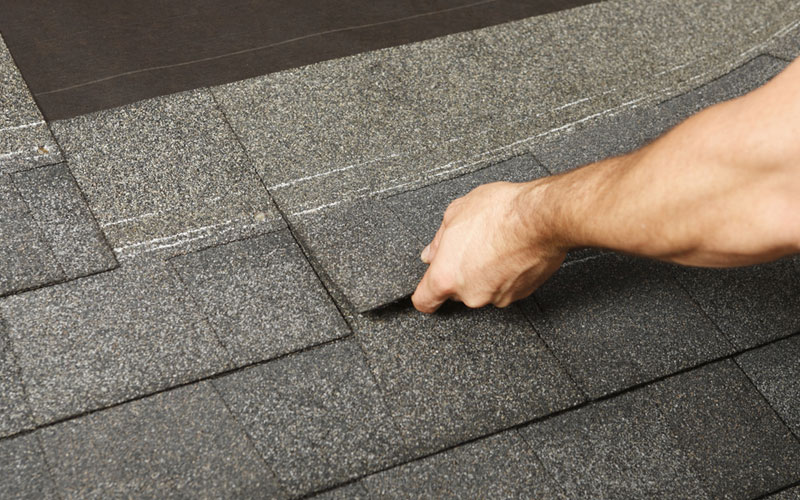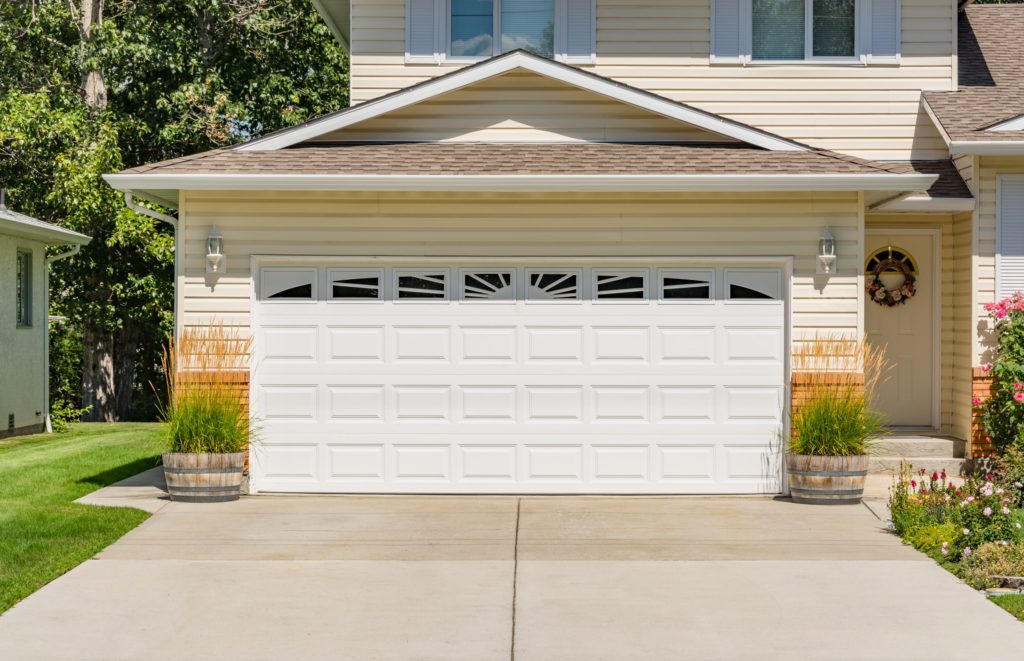A Comprehensive Guide to Identifying and Managing a Leaking Roof
If you’ve noticed a leak in your roof, it’s important to identify and address the issue as soon as possible. Unaddressed leaking roof can lead to serious damage that results in costly repairs and/or replacements. In this comprehensive guide, we’ll help you diagnose the source of your leak, provide helpful advice on how to repair or replace your roof if necessary, and discuss best practices for preventing future leaking issues. Whether you’re a homeowner looking to tackle an unexpected maintenance problem or a building manager trying to stay ahead of deteriorating conditions – our tips will help get you on track toward resolving the issue quickly and effectively
Signs of a Leaky Roof and How to Spot Them
Identifying a leaky roof early on is crucial to prevent extensive damage. Here are a few telltale signs that can help you spot a roof leak:
- Discoloration of ceilings or walls: Look for brown, yellow, or gray stains on your ceilings or interior walls. These are often the first signs of a leak.
- Damp spots on the floor: If you notice unexplained dampness or pooling of water on the floor, it could be a sign of a leaking roof.
- Peeling paint or wallpaper: If the paint on your walls or ceiling is peeling or the wallpaper is coming loose, it might be due to a moisture problem, possibly from a roof leak
- Mold or mildew: Mold or mildew growth, particularly on ceilings or in attic spaces, can indicate a leaky roof.
- Damage to shingles: Check your roof’s shingles for signs of damage. If they are cracked, missing, or appear wet, it could be a sign of a roof leak.
Remember, early detection is crucial in managing a leaking roof effectively. If you notice any of these signs, it’s best to take immediate action to prevent further damage.
How to Find and Access the Leaking Area
Tracking down the exact location of a roof leak can be a bit tricky, but with careful observation and a systematic approach, you can identify the problematic area. Here are some methods to find and access the leaking area:
- Inspect the Attic: Your first step should be to inspect your attic during the day. Look for signs of water damage, wet insulation, or mold. A flashlight can help you spot leaks or damp spots, but do remember to tread carefully as the attic may not be designed to bear your weight.
- Trace Water Damage: Water stains on your ceiling can help point you in the right direction. However, remember that water tends to travel along rafters or can seep through the insulation before it begins to stain the ceiling. Hence, the source of the leak may be somewhat different from where the stain appears.
- Check Roof Vents and Chimneys: Roof vents, skylights, and chimneys are common places for leaks because they project through the roof. Water can seep through cracks or loose flashing around these structures.
- Water Test: If you’re still unable to locate the leak, you can conduct a water test. Have someone stay inside the house while you climb onto the roof with a garden hose. Begin wetting the roof, one section at a time, while the person inside looks for signs of dripping water. Start from the lower sections and work your way up to ensure you don’t miss the leak.
Remember, safety is paramount when climbing onto the roof. If you’re uncomfortable doing this, it might be best to hire a professional roofer.

Leaky Roof Repair
Repair Methods to Consider for Your Leaking Roof
Once you’ve identified the source of the leak, the next step is to consider your options for repairing the issue. The ideal method will depend on the severity of the problem, the type of your roof, and your budget. Below are a few repair methods that may be applicable:
- Replace Damaged Shingles: If the leak is due to damaged or missing shingles, replacing them might solve the problem. Remove the damaged shingle, apply a generous amount of roofing cement, and then put the new shingle in place.
- Reflash Chimneys, Skylights, or Vents: If your roof leak originates from around a chimney, skylight, or vent, you might need to replace the flashing. Flashing is a thin piece of metal installed to prevent water seepage into the intersections of the roof with other structures.
- Apply Roofing Sealant: For minor leaks, a roofing sealant applied to the area can be an effective solution. Ensure the area is dry and free of debris before applying the sealant.
- Install Heat Tapes: If ice dams are causing leaks, installing heat tapes in the areas where they typically form can prevent future leakage.
- Roof Replacement: If your roof is old or the leak is extensive, it may be more cost-effective in the long term to replace the entire roof instead of making repeated repairs.
Remember, if you’re not comfortable performing these repairs yourself or if the damage is substantial, it’s best to hire a professional. A licensed roofer can accurately diagnose the problem and suggest the most effective repair or replacement options.
What You Should Know Before Starting Repairs
Before embarking on the task of repairing your leaky roof, there are a few crucial things to consider:
- Understand Your Limitations: Roof repairs can be a complex task, requiring a certain level of expertise. If you are not confident or experienced in such tasks, it’s safer and likely more cost-effective to hire a professional roofer.
- Consider Safety: Working on a roof can be dangerous, especially if it’s steep or slippery. Always ensure you have the proper safety equipment, such as harnesses and non-slip shoes
- Check the Weather: Never attempt roof repairs in adverse weather conditions, like rain, snow, or high winds. Not only is it extremely dangerous, but a wet or icy roof will also make it hard for the repair materials to adhere properly.
- Material Compatibility: Make sure that the repair materials you’re using are compatible with your existing roofing materials. Using incompatible materials can create other issues and can shorten the lifespan of the repair.
- Inspection: If you’re dealing with multiple leaks or the source of the leak isn’t apparent, it might be worth getting a professional roof inspection. They can carry out a thorough check and identify any potential issues you may not be aware of.
- Permits: Depending on the extent of the repairs or if you’re considering a roof replacement, you may need to check with your local council or regulatory body to see if permits are required.
Being well-prepared before you start repairs can save you time, money, and ensure the longevity of your roof. Remember, when in doubt, consult with a professional.
Tips for Finding an Experienced Roofer to Help With Your Repairs
Finding a skilled and experienced roofer is crucial to ensure that your roof repairs are carried out professionally and efficiently. Here are some tips to help you select the right roofing contractor:
- Referrals: Personal referrals from friends, family, or neighbors can be a reliable way to find a reputable roofer. They can share their first-hand experiences, which can give you a fair idea about the quality of work and customer service.
- Online Reviews: Check online reviews and ratings to assess the credibility and performance of the roofing contractors in your area. Platforms like Google, Yelp, and Angie’s List can provide valuable insights about their previous work.
- Credentials: Verify the contractor’s credentials. They should be licensed, insured, and bonded. Also, check if they are certified by roofing manufacturers, which indicates that they follow high standards.
- Detailed Proposal: A professional roofer will provide a written agreement that outlines the scope of work, materials to be used, time frame, cost, and warranty details. This transparency can help prevent future disputes.
- Warranty: Make sure the contractor offers an extensive warranty that covers both materials and labor. A roof is a long-term investment, and a warranty can give you peace of mind.
- Communication: Good communication is key. The contractor should answer your queries promptly, keep you updated about the progress, and be professional in their dealings.
Remember, quality roof work is an investment that can save you from potential costly repairs in the future. Therefore, take your time to find a reliable and experienced roofer.

Professional Roof Leak Repairing
The Benefits of Regular Roof Maintenance
Regular roof maintenance is crucial for several reasons. Firstly, it can significantly extend the lifespan of your roof by ensuring that minor issues are identified and rectified before they escalate into major problems. This includes checking for any loose or damaged shingles, inspecting the flashing around chimneys and vents, and clearing any debris that can clog gutters and downspouts.
Secondly, regular maintenance can save you money in the long run by avoiding costly repairs or premature replacement of the entire roof. By addressing small issues promptly, you can prevent them from turning into more significant and expensive problems down the line. This proactive approach can help you avoid the inconvenience and financial burden of extensive roof repairs or the need for a complete roof replacement.
Thirdly, regular maintenance can improve your home’s energy efficiency. A well-maintained roof ensures that it adequately insulates your home, reducing energy consumption. This means that your heating and cooling systems won’t have to work as hard to maintain a comfortable indoor temperature, resulting in lower energy bills.
In addition to the practical benefits, regular roof maintenance also enhances the aesthetic appeal of your property. A well-maintained roof contributes to the overall curb appeal of your home, giving it a polished and well-cared-for appearance. This can be especially important if you plan to sell your home in the future, as a visually appealing roof can attract potential buyers and increase the value of your property.
Furthermore, it’s important to note that regular roof maintenance is often a stipulation for the validity of your roofing warranty. Neglecting regular maintenance can mean you forfeit your warranty coverage, leaving you responsible for any future repairs or replacements that may be needed.
Given these reasons, scheduling regular professional roof inspections and carrying out necessary maintenance should be a priority for every homeowner. By investing in regular roof maintenance, you can ensure the longevity, efficiency, and aesthetic appeal of your roof while also protecting your investment in your home.
Prevention Techniques to Keep Your Roof Leak-Free
Keeping your roof leak-free requires a proactive approach to maintenance. Here are some prevention techniques that you can use:
- Regular Inspections: Regularly inspect your roof for any signs of damage such as broken or missing shingles, damaged flashing, or sealant failure. The earlier you spot these issues, the quicker they can be resolved, preventing leaks from occurring.
- Gutter Cleaning: Ensure your gutters are clean and free from debris. Blocked gutters can overflow and cause water to seep into the roof structure, leading to leaks.
- Proper Ventilation: Your roof needs to be properly ventilated to prevent moisture build-up which can lead to condensation, mold, and ultimately, leaks.
- Roof Overhangs: Make sure your roof overhangs are sufficient to prevent rainwater from seeping into the walls.
- Sealant Application: Apply a quality sealant around any roof penetrations like chimneys, vents, or skylights to ensure they are watertight.
- Regular Maintenance: Apart from inspections, carry out regular maintenance like replacing damaged shingles and repainting exposed areas to prevent water penetration.
By implementing these prevention techniques, you can keep your roof in optimal condition and extend its lifespan, effectively keeping it leak-free.
In conclusion, taking the time to find a reputable roofer and investing in regular maintenance can go a long way in ensuring the longevity, efficiency, and aesthetic appeal of your roof. By being proactive and implementing prevention techniques, you can prevent costly leaks and repairs, saving yourself both time and money in the long run. Remember, a well-maintained roof is not only functional but also enhances the overall appearance and value of your home. Don’t neglect the importance of regular roof maintenance, and you’ll reap the benefits for years to come.

Roof Repairing Professional
https://www.google.com/maps?cid=465871782046421571



 (210) 777-7663
(210) 777-7663
